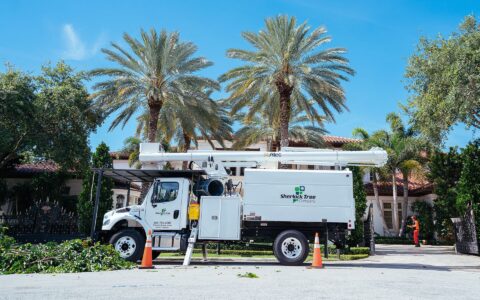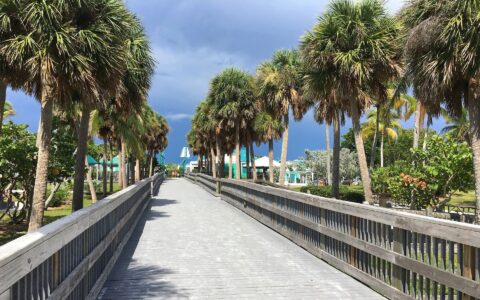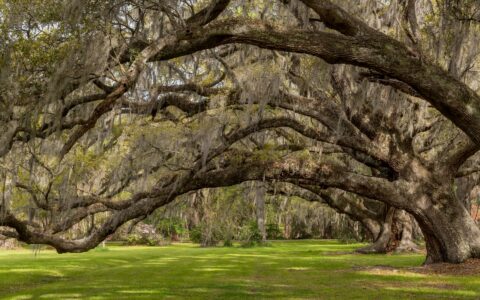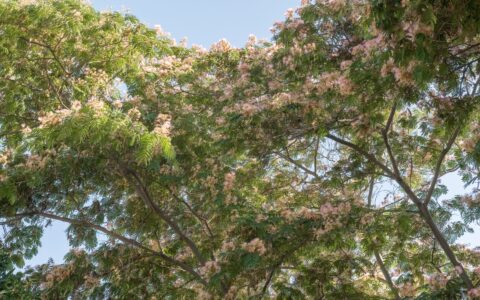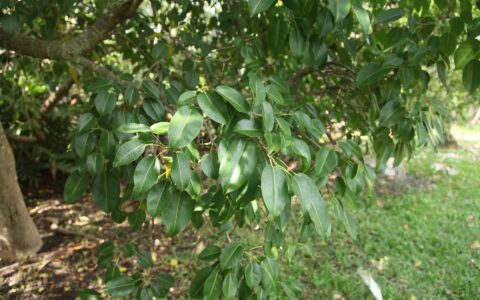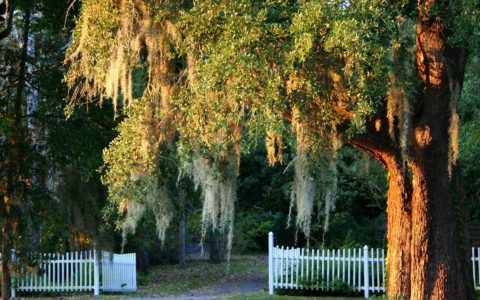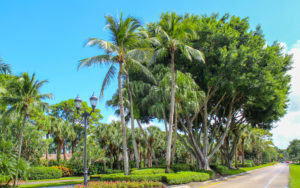Imagine driving down a South Florida street lined with a sea of vibrant, lavender blooms. These magical trees are called Jacarandas and are renowned for their beauty and benefits to the local ecosystem. In this article, we’ll dive into the unique characteristics of Jacarandas, the many benefits of planting Jacaranda trees, and how to properly care for these botanical gems. Get ready to bring a splash of color to your landscape!
Key Takeaways
- Jacaranda trees are known for their vibrant lavender blooms and lush foliage.
- They provide numerous benefits to the local ecosystem, including attracting birds, butterflies, and bees, supporting pollination, and contributing to biodiversity and conservation efforts.
- Jacaranda trees enhance the aesthetics of a property with their vibrant flowers, natural shade structure, and unique twisted trunks, adding beauty and value to the landscape.
- You can create a more beautiful and inviting outdoor living space by planting and caring for a Jacaranda tree while supporting sustainable and eco-friendly initiatives.
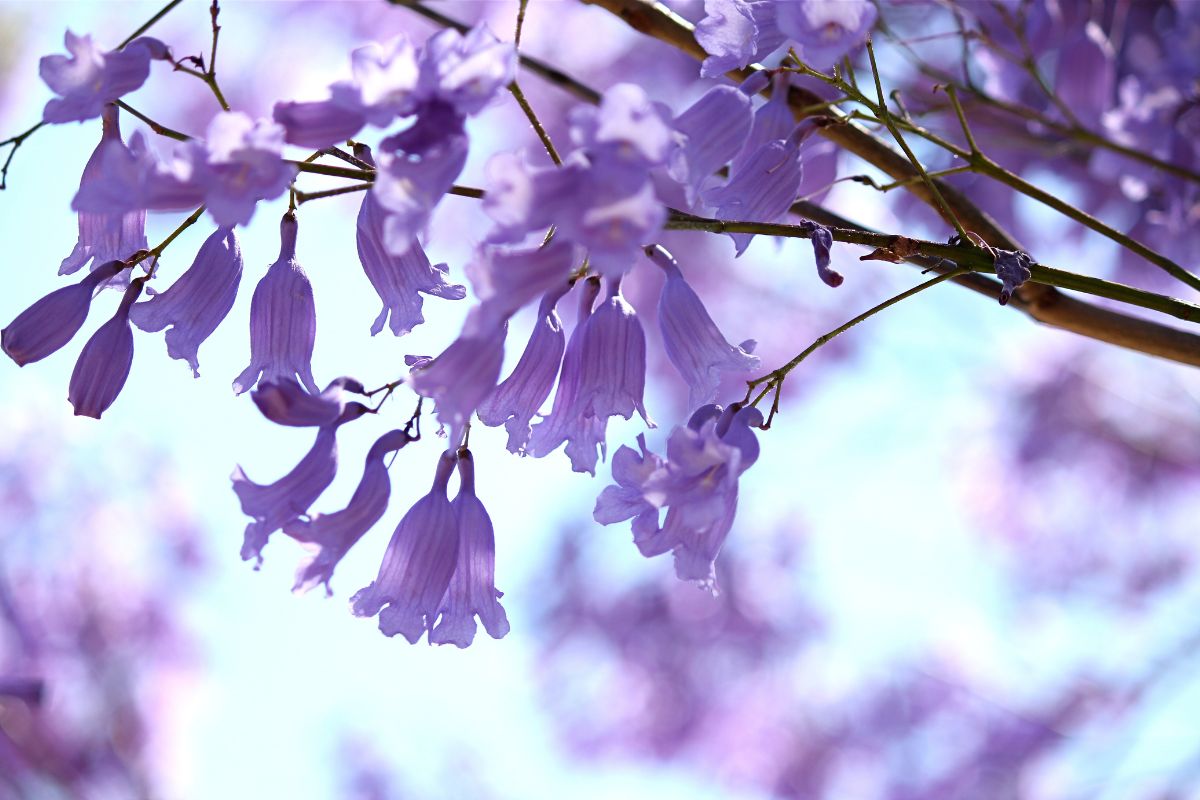
Jacaranda trees are known for their vibrant lavender blooms and lush foliage.
Jacaranda Tree Characteristics
The Jacaranda tree, celebrated for its extraordinary beauty, is a deciduous tree indigenous to South America, primarily in Brazil and Argentina. These trees are renowned for their striking, lavender-blue or purple blossoms, which adorn the tree during the spring, creating an enchanting and visually captivating spectacle.
Jacaranda trees exhibit distinct characteristics beyond their blooms. They are characterized by their fern-like, pinnate leaves and have the potential to grow to considerable heights, often reaching up to 40 feet or more. The tree’s width can span a similar range, forming a canopy that provides generous shade, making it a sought-after choice for landscaping.
During its blooming season in the spring, the tree becomes a stunning focal point, with clusters of vibrant flowers covering its branches, creating a canopy of vivid color. The tree’s overall shape is typically vase-like or rounded, with a wide canopy.
In terms of structure, the Jacaranda tree features a smooth, grayish-brown bark that adds to its overall appeal. The bark contrasts beautifully with the lush green foliage during the growing season.
Jacaranda trees are cherished not only for their breathtaking flowers but also for their overall aesthetic impact. Whether lining streets or gracing landscapes, these trees infuse elegance and charm into their surroundings, making them a favorite choice for ornamental planting.
Jacaranda Care Requirements
To maintain its stunning beauty, it’s essential to understand the care requirements for this exotic plant. Caring for the Jacaranda tree is relatively straightforward, but there are a few important factors to consider.
Watering
The Jacaranda tree is moderately drought-tolerant once established. Water once or twice weekly until it is established. Once established, the trees will only need water during times of extreme drought.
Pruning
Pruning is essential to maintain the tree’s shape and promote healthier growth. Any overgrown branches should be trimmed to maintain the tree’s natural umbrella shape. You should also remove dead or diseased branches, allowing the tree to focus its energy on new growth.
Fertilizing
This tree thrives when given proper fertilization. Apply slow-release fertilizer to the soil, giving the tree essential nutrients during early spring, right before the growing season starts.
The Jacaranda tree’s beauty is not just in its breathtaking lavender blooms, but also in its overall health. By following these care steps, you’ll have a vibrant and thriving tree gracing your South Florida property.
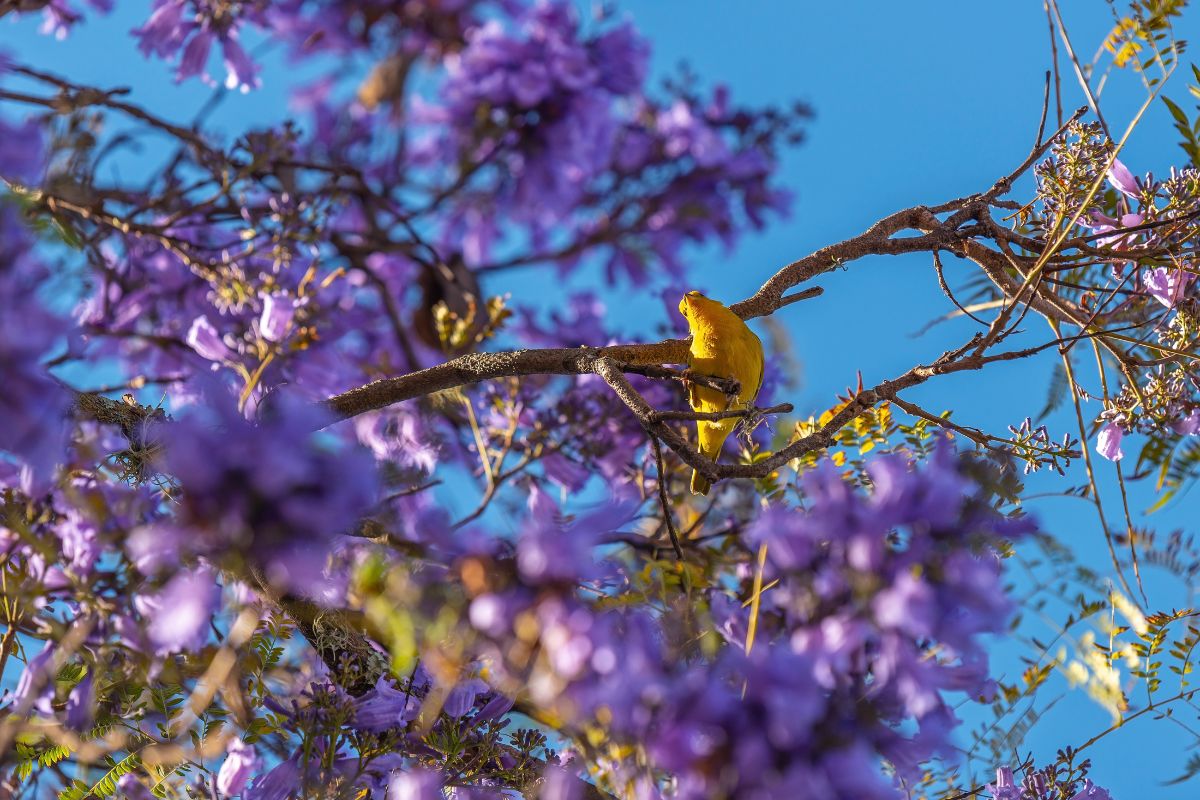
The Jacaranda is eco-friendly, as its dense foliage offers birds shelter and nesting spots, while the fallen flowers provide a food source for countless insects.
Jacaranda’s Benefits to the Local Ecosystem
Jacaranda trees are not only stunning to look at, but this magnificent plant also plays a vital role in the local ecosystem.
With its breathtaking purple blooms, the Jacaranda tree is a favorite among local wildlife in South Florida. Its vibrant flowers attract various birds, butterflies, and bees, which, in turn, contributes to the pollination of other plants in your garden.
By having a Jacaranda tree on your property, you’re beautifying your landscape and helping sustain local biodiversity. Its dense foliage offers birds shelter and nesting spots, while the fallen flowers provide a food source for countless insects. You’re literally creating a mini ecosystem in your backyard!
Moreover, the Jacaranda’s drought-resistant nature makes it an environmentally friendly choice. It thrives in the South Florida climate with minimal watering requirements, which conserves water resources. Plus, like all trees, the Jacaranda helps reduce carbon dioxide in the atmosphere, aiding the fight against climate change.
So, adding a Jacaranda tree to your property is more than just an aesthetic decision—it’s eco-friendly. You’ll be doing your part in supporting local wildlife and combating climate change. Now, that’s a win-win situation!

If you want your Jacaranda tree professionally planted, Sherlock Tree can help.
Impact on Property Aesthetics
Planting this stunning purple-flowering plant can dramatically enhance your home’s curb appeal. The Jacaranda tree immediately draws the eye with its vibrant lavender blooms and delicate fern-like foliage. It’s a living work of art that adds a touch of elegance and whimsy to your exterior.
Here are a few ways the Jacaranda tree can enhance your property’s aesthetics:
A Bright Pop of Color
The Jacaranda’s signature purple flowers bloom in late spring and can last until the fall, providing months of vibrant color. The green, fern-like leaves add a contrasting backdrop to the purple flowers, creating a stunning visual effect.
Structure and Form
The tree’s expansive canopy provides a beautiful, natural shade structure. Its unique, twisted trunk adds an intriguing architectural element to your landscape.
Imagine sipping your morning coffee or hosting a garden party under the shade of a mature Jacaranda. The soft purple petals falling around you create a serene and picturesque setting. So, why not add a Jacaranda tree to your property? It’s not just a tree; it’s an investment in a more beautiful and inviting outdoor living space.
Frequently Asked Questions
Q. Are Jacaranda trees suitable for all types of soil found in South Florida?
A. No, jacaranda trees aren’t suitable for all South Florida soils. They thrive in well-drained, sandy, or loamy soils. Clay or waterlogged soils can hinder their growth and overall health. Choose your planting spot wisely.
Q. How quickly does a Jacaranda tree grow, and when can I expect it to bloom?
A. Jacaranda tree grows moderately fast, usually 1 to 2 feet per year. You’ll typically see it start blooming when it’s about 5-7 years old, showcasing a spectacular display of purplish-blue flowers.
Q. Are there any common diseases or pests that affect Jacaranda trees in South Florida?
A. Like a superhero, your jacaranda tree is resilient to most pests and diseases. However, it’s not invincible. Watch out for root rot and fungal diseases, especially during South Florida’s humid, rainy seasons.
Q. What is the average lifespan of a Jacaranda tree in South Florida?
A. In South Florida, your jacaranda tree can live up to 75 years, sometimes even more. However, providing proper care and protection from diseases and pests is essential to ensure its longevity.
Q. Can Jacaranda trees withstand hurricanes and other extreme weather conditions common in South Florida?
A. Yes, jacaranda trees can tolerate extreme weather conditions. They’re sturdy enough to withstand South Florida’s frequent hurricanes. However, to ensure their longevity, it’s best to provide them with proper care and protection.
Embrace the Beauty and Impact of Jacaranda Trees: Make Your Landscape Shine!
The Jacaranda tree is a remarkable addition to your South Florida property, offering breathtaking beauty and numerous benefits to the local ecosystem.
So, take the opportunity to add a Jacaranda tree to your property and be a part of something bigger than just landscaping. You can support local wildlife, conserve water resources, and contribute to a greener future. If you want your Jacaranda tree professionally planted, call us at 954-788-4000. We’re South Florida tree experts and can help you every step of the way.
Call Sherlock for quality tree services
Whether you're looking for specific tree care services, such as palm trimming, tree removal, or disease treatments, or would like one of our Arborists to examine your trees to identify any issues and recommend options, we're always here for you! Just give us a call at 954-788-4000 to set up an appointment.
SEE MORE ARTICLES
Looking for more?
We've got you covered with a monthly newsletter full of tips, resources, updates, how-to's, and other helpful information about trees and landscapes in South Florida!

